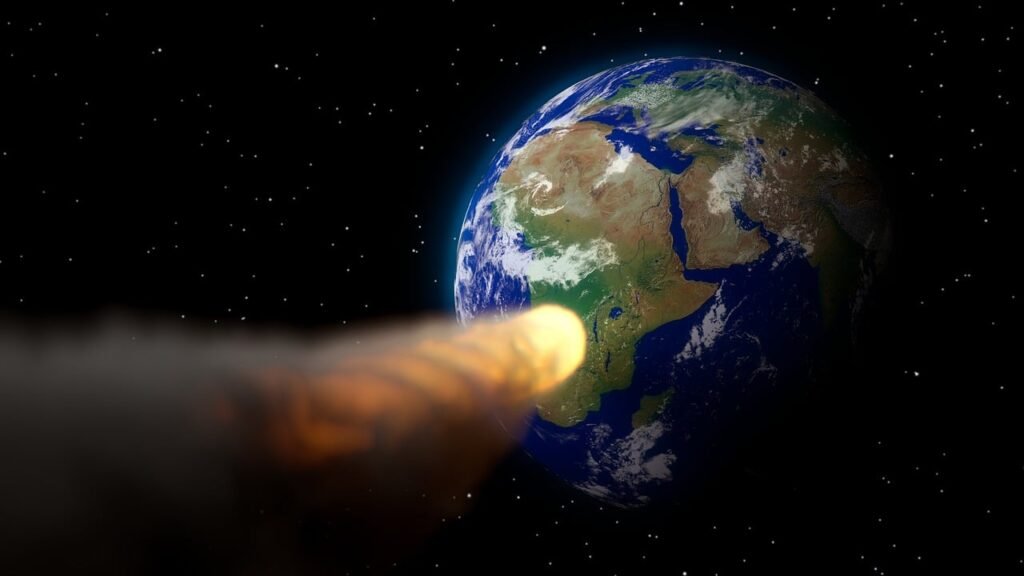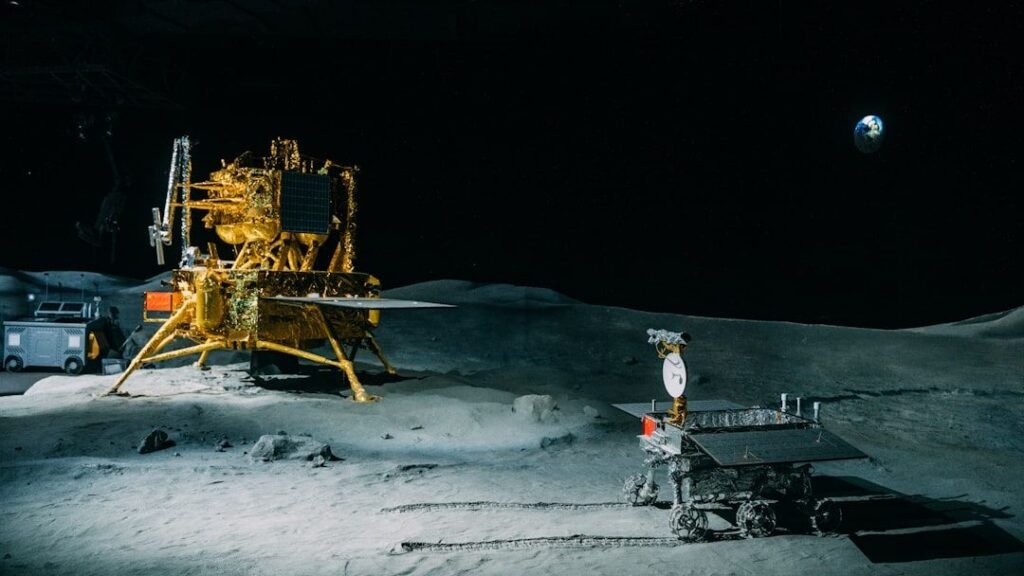Imagine waking up to headlines that a skyscraper-sized asteroid once thought to be on a collision course with Earth is now racing past us at breakneck speed. That’s the case with asteroid 2025 FA22, a massive space rock that had astronomers buzzing earlier this year when calculations suggested it could smash into our planet in 2089. Now, instead of bracing for disaster, scientists and skywatchers alike are preparing for a breathtakingly close flyby on September 18, 2025 — a cosmic reminder of how fragile, and how carefully monitored, our place in space really is.
A Close Encounter: What is Asteroid 2025 FA22?
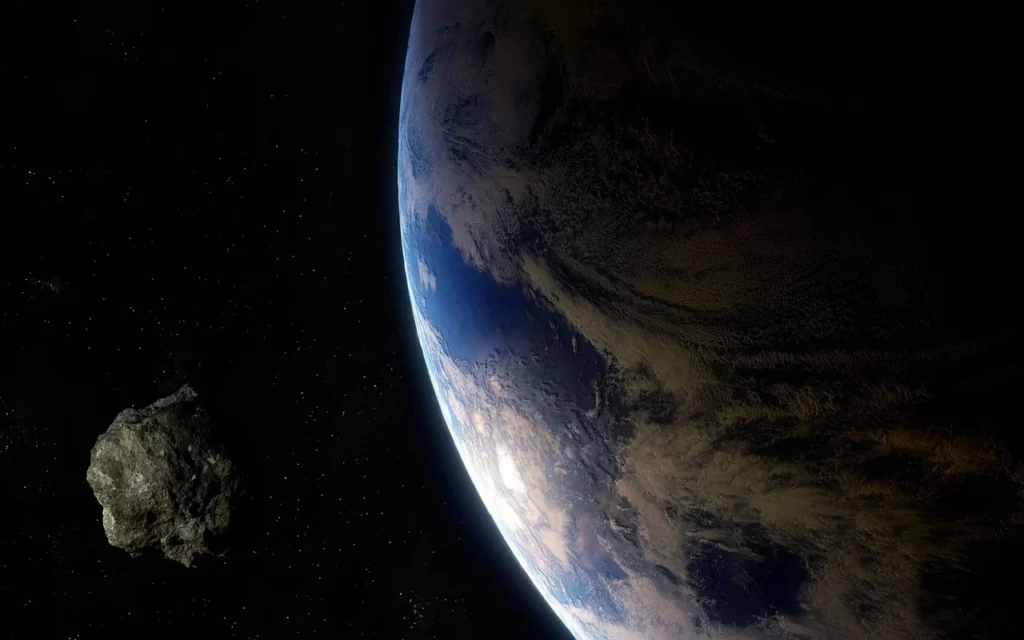
Asteroid 2025 FA22 is a near-Earth object (NEO) first observed on March 29, 2025, by the Pan-STARRS 2 survey in Hawaii.
It has been classified as “potentially hazardous” owing to its size and its orbit’s potential to bring it relatively close to Earth in the future.
In terms of scale: estimates place its diameter between 130 and 290 meters (≈ 427-951 feet).
That’s large enough that, were it to impact the Earth, it could cause major regional damage. But current observations show that no such impact is expected.
The Flyby on September 18, 2025: Distance, Speed, and Visibility
On September 18, 2025, 2025 FA22 will make its closest approach to Earth. Key details:
Distance: It will pass at about 835,000 km (≈ 520,000 miles) from Earth. That’s just over twice the average distance between Earth and the Moon.
Time: The closest approach is expected around 07:41 UTC.
Speed: The asteroid is hurtling through space at roughly 24,000 mph (about 38,600 km/h) at that closest point.
Visibility: It is expected to reach an apparent magnitude of ~13.2 at close approach, which means it will not be visible to the naked eye but amateur astronomers with modest telescopes should be able to spot it. Also, live-streaming of the flyby will be available.
Risk History: Was an Impact Ever Likely?
Earlier in 2025, astronomers calculated 2025 FA22’s orbit and found a very small chance that it could impact Earth in 2089, based on some preliminary models. This briefly placed it at the top of the European Space Agency’s (ESA) asteroid risk lists.
However, further observations and refined orbital data have since ruled out an impact in 2089. Scientists now believe that 2025 FA22 poses no risk of collision for at least the next century.
Why This Asteroid Matters
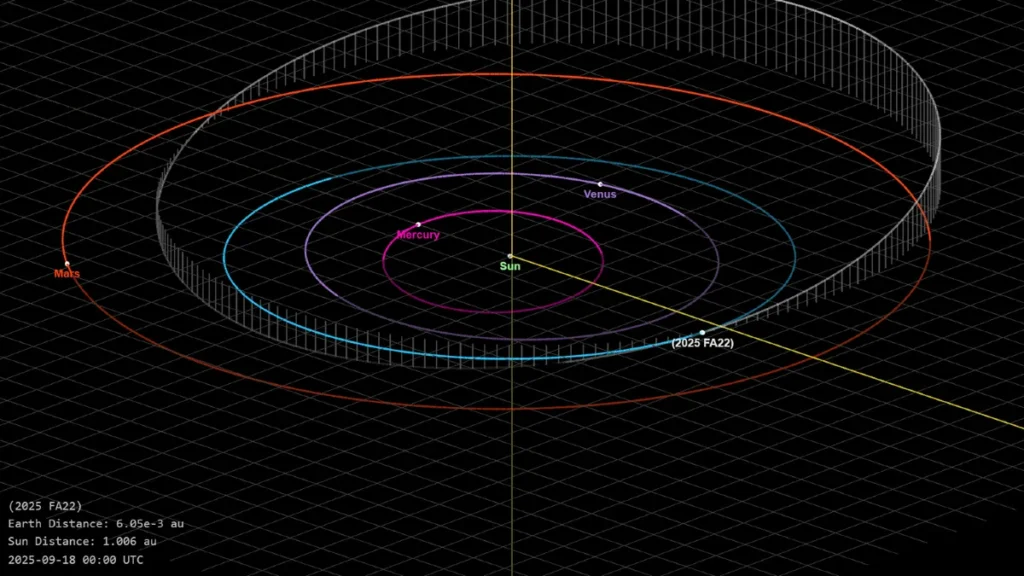
Several reasons make 2025 FA22 particularly noteworthy:
Size & Destructive Potential: With a diameter in the hundreds of meters, an impact from an asteroid of this size would be catastrophic for a city or region. That height / width makes it “skyscraper-sized.”
Flyby Proximity: Passing just over twice as far as the Moon is close in cosmic terms for an object of this magnitude. This offers a rare opportunity to observe and refine its orbit with high precision.
Scientific Monitoring & Planetary Defense: Organizations like NASA’s Center for Near Earth Object Studies (CNEOS) and ESA are keeping tabs on 2025 FA22. Each close approach allows scientists to improve predictions, test their monitoring systems, and fine-tune risk assessments.
Future Encounters: The asteroid is expected to make similar close approaches in 2089 and 2173 (though current data suggest no impact in those years). These future flybys will likely continue to be observed and modeled carefully.
Community Response: Watching & Learning
Astronomers around the world are using this event as both an observational opportunity and a way to inform the public. Live streams, telescope observations, and media coverage are all contributing to broader awareness of how NEO tracking works. Institutes like ESA have published visuals and updated risk tables to show how earlier impact concerns were revised with more data.
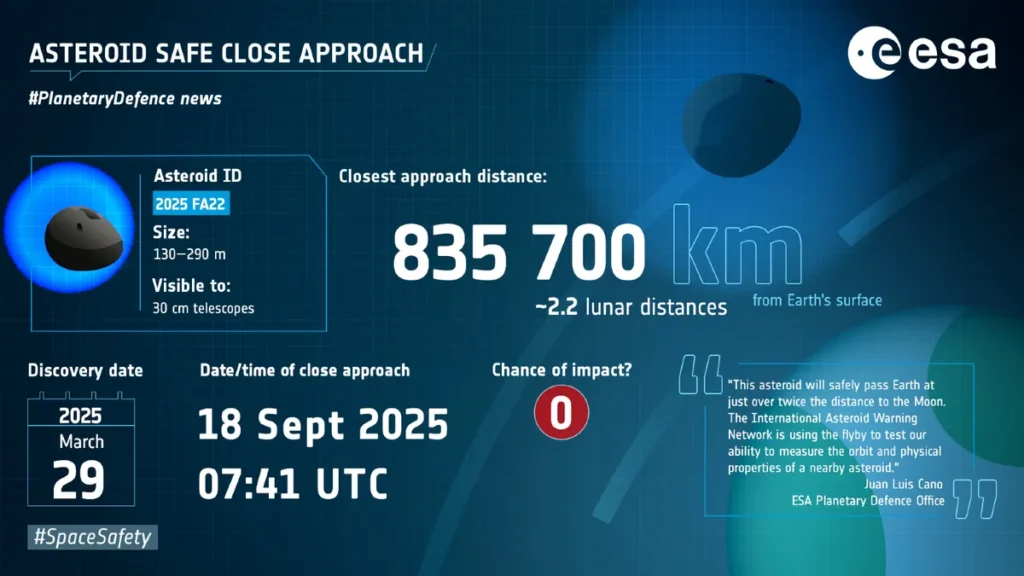
For skywatchers, the event is another chance to see the effects of human monitoring of near-Earth space—how small uncertainties can change predictions, and how scientists work to narrow those down. And while it’s too dim for the naked eye, those with good amateur telescopes may get a clear glimpse.
Asteroid 2025 FA22 is not a threat—at least not in the foreseeable future. But its passage on September 18, 2025, serves as a vivid reminder of how dynamic the solar system is. What once seemed like a remote chance of impact in 2089 has now been ruled out thanks to better data.
Even though it won’t light up the sky for casual observers, 2025 FA22’s flyby is scientifically valuable. Each encounter sharpens our understanding of near-Earth space, strengthens our ability to predict orbital behavior, and underlines the importance of tracking asteroids before uncertainties grow too large.

Hi, I’m Andrew, and I come from India. Experienced content specialist with a passion for writing. My forte includes health and wellness, Travel, Animals, and Nature. A nature nomad, I am obsessed with mountains and love high-altitude trekking. I have been on several Himalayan treks in India including the Everest Base Camp in Nepal, a profound experience.

